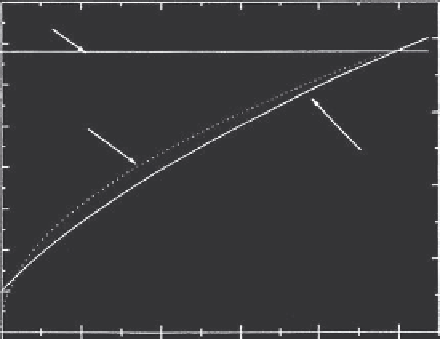Biomedical Engineering Reference
In-Depth Information
55
Kinetic rate
40
50
45
Magnetic field
required to retain particles
in the bed
30
40
Mass transfer rate
35
20
30
25
10
20
0
15
0.0001
0.0002
0.0003
0.0004
0.0005
0.0006
Superficial fluid velocity (m/sec)
FIGURE 12.6
Model prediction of MSFB reaction mass transfer rates at different flow rates
showing also the magnetic field strength required to enable operation at the
necessary superficial fluid velocities. (From Webb et al. 1996.)
for their action. As these processes are variable the reaction and/or adsorp-
tion equations will also vary accordingly. We may point out as an example
the adsorption of
Saccharomyces cerevisiae
in activated carbon or zeolites
governed by the sorption isotherm,
AX
B
+
X
Y
=
(12.19)
where
X
is the free cell concentration in 10
7
cells/g support,
Y
is the adsorbed
cell concentration in 10
6
cells/g support, and
A
and
B
are the coecients that
describe the maximum possible cell loading and the sorptive immobilization
constant of yeast cells on these magnetic particles (Al-Hassan et al. 1991).
First-order rate equations such as
ln
A
=ln
A
0
−
K
i
t
(12.20)
are very often observed for the description of reactions (as e.g., in the immo-
bilization of horse radish peroxidase [HRP] for phenols degradation [Lai and
Lin 2005; Bayramoglu and Arica 2008]), where
K
i
is the inactivation rate
constant, and
A
0
and
A
are the initial activity and the activity after time
t
(min).


Search WWH ::

Custom Search